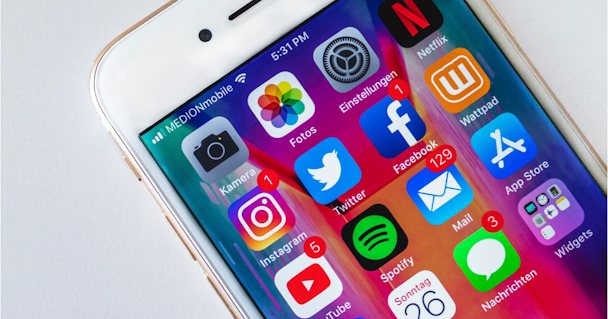Cultural exchange: What global advertisers need to know about Asia Pacific markets in 2019
Did you know hotels with casinos are prohibited from advertising in China?

A look at social media activity in APAC / Unsplash
Likewise, there are strict rules governing the marketing of a range of other industries, products and services in the People’s Republic, from food and spirits to banks, real estate and institutions of higher learning.
And to launch a culturally relevant “nationwide” campaign in India, a marketer will need to create two dozen versions to accommodate nearly two dozen official languages there.
Heading into the new year, there’s still much that global advertisers must understand about APAC markets. Sometimes, such details are regulatory, other times linguistic or technological. In all instances, being culturally relevant and sensitive is key — some have learned the hard way. Take the Italian fashion brand, Dolce & Gabbana, whose recent series of short-form videos on the Chinese social network Weibo proved culturally insensitive and had to be scrapped. Knowledge of the lay of the land, of cultural traditions and taboos, is paramount.
GroupM’s new WeChat incubator in Beijing has been a breakthrough, innovative approach for international advertisers operating in China or keen to connect with Chinese travelers and ex-pats. Using our local specialists’ deep knowledge of rules and restrictions for ad placements — and offering in-language support for the country’s diverse languages and dialects — brands representing categories ranging from travel and apparel to luxury goods and quick-serve restaurants (QSR) have created culturally resonant, highly effective campaigns. These have included short-form video, a format proven especially effective in countries like China and India with a diversity of languages and explosive growth in mobile usage.
Short-form video, in particular, continues to soar in popularity in countries seeing gains in low-cost data for mobile. It is no wonder there is such an emphasis on visuals and video in markets with many languages. After all, a picture or video can communicate a brand’s message effectively across language barriers. A number of U.S. based marketers have taken advantage of our WeChat incubator. For example, through a social data-based promotion that merged WeChat data (from WeChat Wallet, Tags and Look-Alike), a coupon from a global retailer was downloaded by 60% of consumers who received the ad, and 26% redeemed the coupon.
Likewise, a campaign for a global, quick-serve restaurant in China employed social media insight and elements such as social gesture and real purchase action. The initial efforts were followed up by tapping into the gifting moment of red envelopes or packets.
In addition to WeChat expertise, the incubator team has coordinated with a U.S. based FMCG. This advertiser was focused on relevance through Key Opinion Leaders (KOL) and the incubator team crafted the outreach plan with early success in building word of mouth (WOM).
Aside from WeChat, other major social platforms in the region include Weibo (“China’s Twitter”), Line (the most popular social networking app in its native Japan, popular too in Taiwan and Thailand) and KakaoTalk (a popular app in South Korea). A more recent entrant has been Douyin/ TikTok (a short form UGC video platform with global aspirations.)
Still, Facebook is undeniably the 800-lb. gorilla of social media. Much has been said of its popularity decline in Western markets, with its reputation impacted by consumer privacy concerns, but its following continues to surge across other parts of the globe, including APAC. In 2018, Facebook’s APAC user base grew by 13.4%, nearly double its total worldwide growth, reaching 663 million users (eMarketer).
On a wave of more affordable mobile services, India led Facebook’s APAC growth, up 17.3% and accounting for nearly one-third of total users in the region. Even greater growth is expected as WhatsApp status’ become ad eligible, as there is a huge footprint in the region, especially in India.
With short-form video promotions on WhatsApp, TikTok and Facebook Stories, Facebook Messenger and Instagram, brands can be nimble and responsive, continually tracking and testing campaigns to optimize just the right content for growing audiences and bolstering consumer interaction, especially with younger users.
According to client-side respondents to WARC’s 2019 Toolkit survey, more than fourth-fifths either agree (50%) or strongly agree (32%) that a format is an effective tool for consumer engagement, with agency leaders broadly echoing their sentiments. The findings are supported by a joint study from MediaScience and the Ehrenberg-Bass Institute for Marketing Science, which found that seven-second ads deliver 60% of the impact of 30-second videos, often at a much-reduced cost.
It’s little wonder, then, that advertisers and media platforms continue to embrace short-form video. Last year, YouTube introduced its six-second video format to the advertising community. A 2018 SXSW panel, “How to Tell a Six-Second Story,” called the format nothing short of the future of advertising.
Marketers must figure out the best approaches for reaching billions of APAC consumers creatively, effectively and authentically across these native and global platforms. Agency experts should help create brand engagements that feel like one-on-one conversations between close friends. This may involve the creation of useful messaging bots, creating standout lenses, inspiring virtual trial with 3D posts, developing GIFs aligning with a brand, or virtual gifting.
Understanding the latest technological and data-based marketing tactics is, as always, essential. In the case of APAC, learning about and honoring the region’s disparate historical and cultural traditions is every bit as important.
Kieley Taylor is global head of social at GroupM
